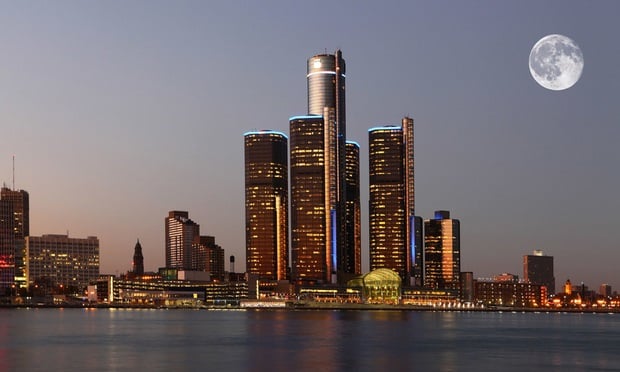Oklahoma City had 31.3% of office space vacant. Charlotte had only a 6% vacancy rate, according to the brokerage firm.
All buildings were included, and were of a minimum size threshold ranging from 5,000 sf to 30,000 sf. The data refers to the direct and sublease space that is physically vacant at the end of the quarter.
In the suburbs, it was a different story. The suburbs surrounding Detroit have only a 12.9% vacancy, ranking ninth out of the 57 suburban markets in the survey. Grand Rapids, on the other side of the state, has a vacancy rate of only 11.2%.
The city of Detroit is experiencing a tough slide through the rough economy, says Jeff Bell, senior vice president at the Grubb and Ellis office in Southfield. He tells GlobeSt.com that three things have led to the vacancy rate rising from 20% last year.
"Three significant corporate consolidations, the faltering economy and the fact that Detroit really hasn't had a dominant demand generator for many years led to the vacancies," Bell says.
He says the three companies: DTE acquiring MichCon, El Paso merging with ANR Pipeline and Stroh's Brewery selling to Miller put about 1 million sf out on the market, almost 10% of the total Detroit existing office space.
It's been a tenants market now, because of the difficulties, Bell says.
"I've seen landlords reducing their rates, an increase in tenant improvement allowances and, in some cases, free rent," he says.
Bell believes because of lack of construction recently, he does see a turnaround for Detroit.
"Twenty-four months ago, Detroit was on fire with activity," Bell says. "Now, there hasn't been excessive building. Vacancies will drop in the next 12-24 months as space is absorbed.
© 2025 ALM Global, LLC, All Rights Reserved. Request academic re-use from www.copyright.com. All other uses, submit a request to [email protected]. For more information visit Asset & Logo Licensing.







